Frans Hoek’s GoalPlayer: Revolutionising Goalkeeping
Football is no stranger to transformation, and one of its most notable evolutions has emerged from a position that often goes unnoticed until it saves the day: the goalkeeper. Traditionally the last line of defence, the goalkeeper’s role has significantly shifted in recent decades. And much of that shift can be attributed to the pioneering work of “The Godfather of Goalkeeping” Frans Hoek. His “GoalPlayer” project aims to redefine the goalkeeper’s place in the game, taking them from mere shot-stoppers to integral players in defensive and attacking play.
With a coaching career that spans giants like Ajax, Barcelona, and Manchester United, Hoek’s credentials are hard to argue with. Having worked closely with some of football’s greatest minds—Johan Cruyff and Louis van Gaal, to name two—he has crafted a vision that places the goalkeeper at the heart of team tactics. Without Frans Hoek, there would have been no Edwin van der Sar, no Victor Valdes, no Pepe Reina and no Tim Krul getting subbed on for a penalty shootout for the Netherlands in their 2014 World Cup quarter-final.
The Traditional Goalkeeper Versus the GoalPlayer
The role of the traditional goalkeeper was largely reactive: wait for a shot, make the save, and, if necessary, distribute the ball to an outfield player. This was their primary function, and for years, this was enough. Yet, as football evolved, with faster, more tactically nuanced play becoming the norm, standing still in the six-yard box was no longer sufficient. The rule changes of the early 1990s, most notably the introduction of the back-pass rule in 1992, forced goalkeepers to improve their ability with the ball at their feet. A goalkeeper could no longer be someone who was only good at shot-stopping, picking up the ball and hoofing it. The rule changes made goalkeepers like Packie Bonner ancient relics.
Frans Hoek saw this as an opportunity. He recognised that goalkeepers needed to be more than just shot-stoppers—they had to become an active part of the team’s overall play. While he has been an advocate for this the game is continuing to develop year on year for goalkeepers. This is where the concept of the GoalPlayer was born. The GoalPlayer is expected to act not only as a defensive presence but also as an integral cog in a team’s attacking build-up, offering an outlet for possession and starting attacks from the back.
“I don’t care about resistance. It is not about me. I do this because I want people to wake up and to confront them with different things. Make them think. My job is to provide the goalkeepers with the best coaching. That means being open. If you don’t agree, show me how you would do it. If someone thinks differently, perfect. But explain why.”
A modern example of this transformation can be seen in goalkeepers like Manuel Neuer, Alisson Becker and Ederson. Neuer’s “sweeper-keeper” style, coming off his line to intercept through-balls and initiate counter-attacks, perfectly aligns with Hoek’s ideology. Ederson, on the other hand, is renowned for his pinpoint distribution, often launching long-range passes to set up goals.
While at Manchester United Hoek worked with David de Gea whose distribution over the last few years was often derided.
“If you are used to doing things a certain way all through your career and that way has made you become the goalkeeper of Manchester United and I bring you out of that, then you are going to wonder what I am doing and why I am doing that… But I am not afraid to do things that I am convinced make goalkeepers better.”
These goalkeepers reflect Hoek’s belief that the goalkeeper must contribute beyond the penalty area, serving as the team’s first attacker as well as its last defender. The GoalPlayer has become an essential part of how modern teams build from the back, changing the dynamics of the game.
Frans Hoek’s GoalPlayer Project
The GoalPlayer project, launched by Hoek, is an educational platform aimed at developing goalkeepers who are fully integrated into team play. This project goes far beyond merely teaching keepers how to make saves or catch crosses. It focuses on the comprehensive development of a player who can contribute tactically, technically, and psychologically to the team’s success.
All is based on the game and within that game the way of playing: how to attack how to defend etc in open play and set plays and what the contribution has to be of the goalplayer in that way of playing.
The platform offers several resources to players and coaches:
- Match Analysis and Masterclasses: Hoek’s project provides goalkeepers with tools to analyse match scenarios and learn how to be more involved in the team’s overall tactics. This isn’t just about learning when to come off the line or how to distribute the ball—it’s about understanding positioning, reading the game, and knowing how to control space on the pitch.
- Comprehensive Training Resources: From advanced drills to new-age techniques like virtual reality training, the GoalPlayer project ensures that goalkeepers are exposed to real-match pressures in a controlled environment. The emphasis is on match realism, meaning training is designed to simulate the challenges goalkeepers face during live matches.
- Coaching Tools and Collaboration: A core philosophy behind the GoalPlayer project is collaboration between goalkeeping coaches and head coaches. Hoek believes that a fully integrated approach, where the goalkeeper is trained as part of the collective team rather than in isolation, leads to better tactical understanding and performance.
One of the most intriguing aspects of Hoek’s project is its commitment to using technology to enhance goalkeeper training. The use of virtual reality (VR), for instance, allows keepers to experience game situations that are difficult to replicate in standard training environments. This technology offers an immersive experience, helping players improve their reactions, decision-making, and positional play.
The Philosophy Behind the GoalPlayer
Central to the GoalPlayer concept is the idea that the modern goalkeeper is not simply there to protect the goal. They are a vital component of the team’s build-up play, often acting as the eleventh outfield player. This means that goalkeepers are now being asked to have the passing range of a central midfielder, the positional awareness of a defender, and the mental toughness to make split-second decisions under pressure.
Hoek’s philosophy has influenced many top clubs across Europe, where goalkeepers are encouraged to be more involved in outfield play. And this isn’t just about the elite teams. Hoek believes that every goalkeeper, at every level of the game, can adopt the GoalPlayer mentality. From Sunday league to the Champions League, the principles remain the same: contribute to both defence and attack, understand your role in the team’s overall strategy, and always be prepared to participate in open play.
The results are evident. Look no further than teams like Manchester City and Bayern Munich, where goalkeepers are regularly seen far from their goal line, dictating the tempo of the game. In this sense, Hoek’s concept isn’t just about transforming individual goalkeepers, it’s about evolving how teams approach the game as a whole.
Japan 2050
The Japanese FA’s bold ambition to develop the world’s top goalkeeper by 2050 led to the appointment of Frans Hoek as the technical advisor for their Goalkeeper Project. His expertise in developing world-class goalkeepers such as Edwin van der Sar, Víctor Valdés, and David de Gea made him the perfect mentor to elevate Japanese goalkeeping to the highest level whilst integrating his GoalPlayer program.
Japan is taking all of this really seriously and were looking for better goalplayers. They have never had a truly world-class class Goalplayer and saw that as a problem if they wanted to win the World Cup.
The plan would be for players to move from the J League to Europe in a route like:
Holland/Begium/Portugal and from there to the top 5 European leagues.
The idea would be to first move to maybe a lower ranked European League team and from there to the top team in one of the 5 European Leagues.
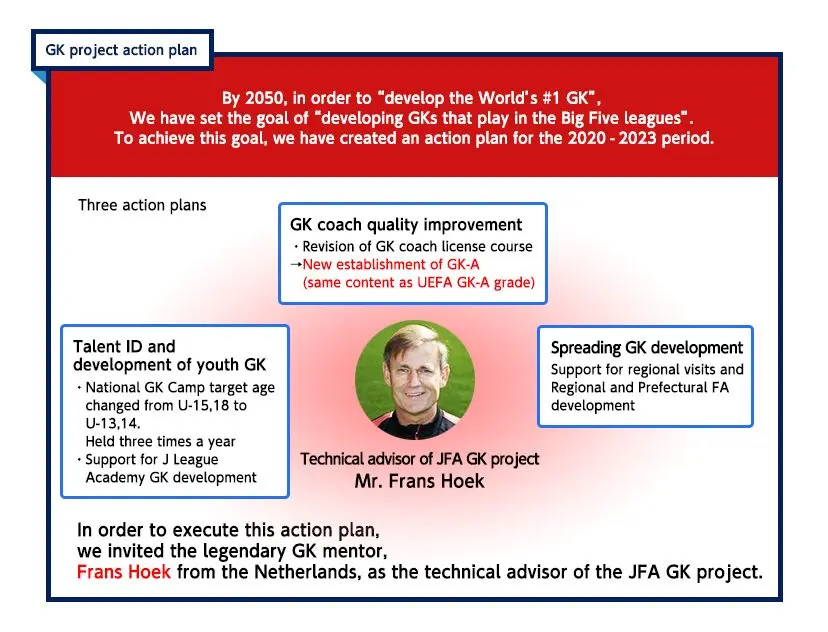
Central to the Goalkeeper Project, which forms part of Japan’s long-term goal of winning the World Cup by 2050, are three key action plans laid out for the 2020–2023 period. The first involves improving the quality of goalkeeper coaches by introducing a new GK-A license, which is on par with UEFA’s coaching standards. The second focuses on the identification and development of youth goalkeepers, reducing the age of the National GK Camp participants from U-15 to U-13 and U-14, ensuring early access to talent. Additionally, JFA holds these camps three times a year and actively supports goalkeeper development across J-League academies. The third action plan seeks to spread GK development through regional visits and the involvement of local Football Associations across Japan’s nine regions and 47 prefectures, ensuring a grassroots effort.
Frans Hoek’s mentorship has already had a noticeable impact on young talents like Zion Suzuki who has previously been linked with a move to Hoek’s former club Manchester United. Suzuki, a highly promising goalkeeper who has emerged as one of Japan’s brightest prospects, has been moulded under the principles of Hoek champions—technique, positioning, and the psychological demands of the role.
Known for his calmness under pressure and sharp reflexes, Suzuki has become a product of the rigorous youth development plans outlined in the JFA’s project, directly benefiting from Hoek’s philosophy. This structured approach is part of the four guiding principles of the GK project, which include talent identification, goalkeeper coach development, youth GK development, and coach education.
When speaking about the Man United linked goalkeeper Zion Suzuki, Frans Hoek had the following to say:
Zion Suzuki is progressing in the right way and on schedule, but as we know there are many factors who will play a role if that will happen yes or no. But having said that: he was identified early with the talented camp and made steps after that. Let’s see what happens. It would be a little miracle because it happened right after we started the project.
It is clear that one Goalplayer of that level is not enough (for Japan to succeed) we hope that there well be more players like Zion, of course, so the chance of success will be bigger.

As Suzuki continues to grow, many see him as the potential fulfilment of the JFA’s long-term goal: a goalkeeper who can not only compete but excel in Europe’s top leagues. The project’s four pillars of activity—national team involvement, youth development through elite programmes, advanced coaching education, and technical analysis of both domestic and international competition—are laying the groundwork for this.
Right now Zion Suzuki is playing in Italy’s Serie A for Parma after a successful spell in Belgium. With Andre Onana experiencing a tough start to his time at Manchester United could Suzuki find himself at home at Manchester after once rejecting them?
So far it s fantastic to see Zion his pathway and how he adapts to the new level he plays in.
With the support of Hoek and this comprehensive system in place, Japan moves closer to achieving its ultimate dream: hosting the World Cup and becoming world champions, with the world’s top goalkeeper between the posts.
The Future of Goalkeeping
As football continues to evolve, the demand for goalkeepers who can play with their feet, read the game, and act as an extra outfield player is only going to increase. The GoalPlayer project is designed to prepare keepers for this future, offering them the tools and training they need to succeed in this multifaceted role.
Frans Hoek has always been ahead of his time, and with the GoalPlayer, he is once again setting the standard for what goalkeeping can be. As teams continue to demand more from their keepers, those who have embraced the GoalPlayer mentality will be the ones who thrive in the ever-changing landscape of football.
If you want to explore more about how Hoek’s GoalPlayer project is shaping the future of football, visit the GoalPlayer website, where you can find everything from tactical insights to training resources and masterclasses.


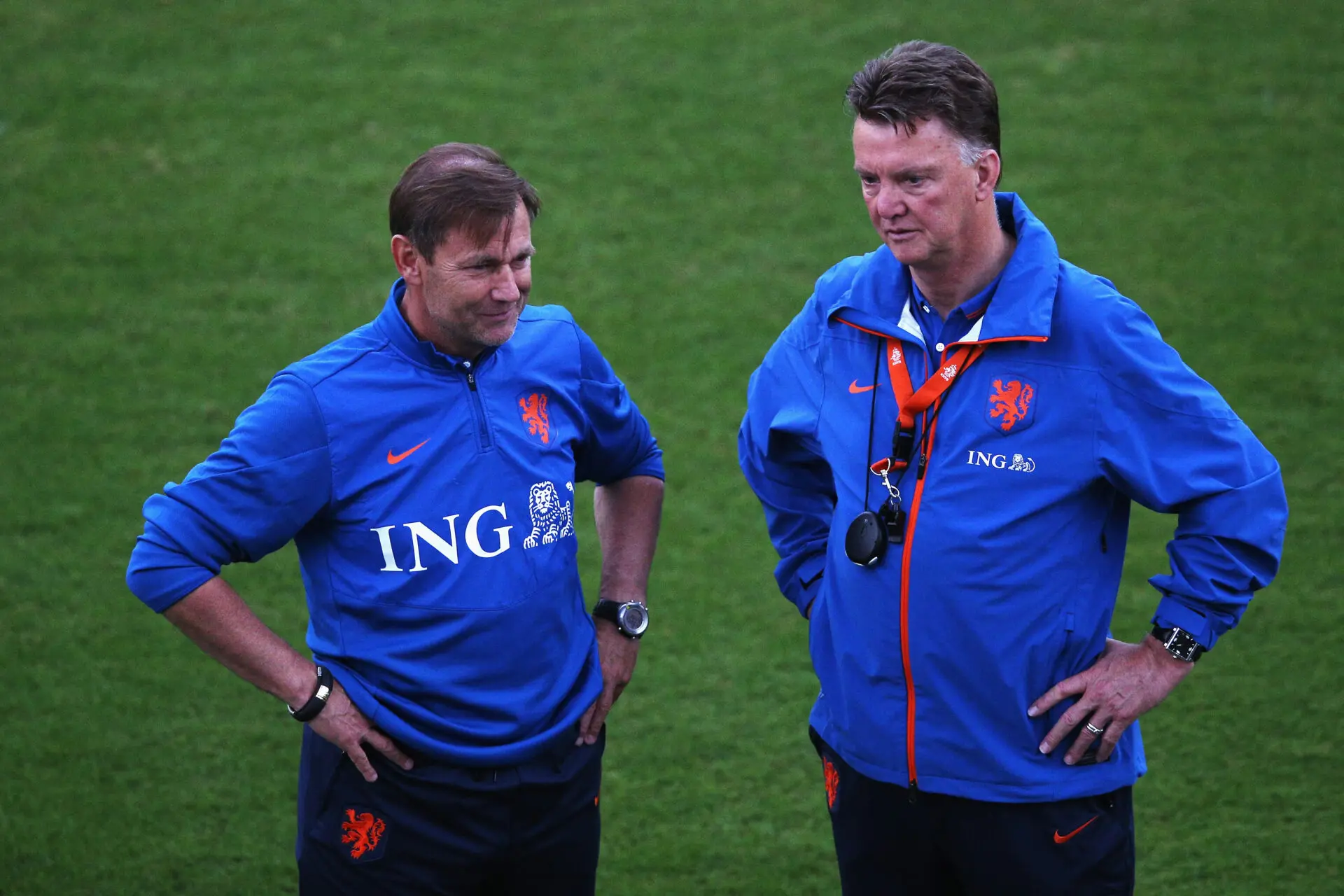
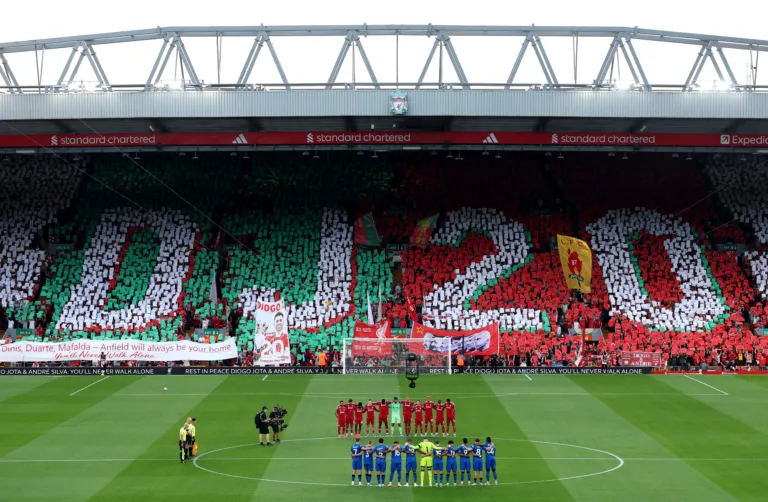
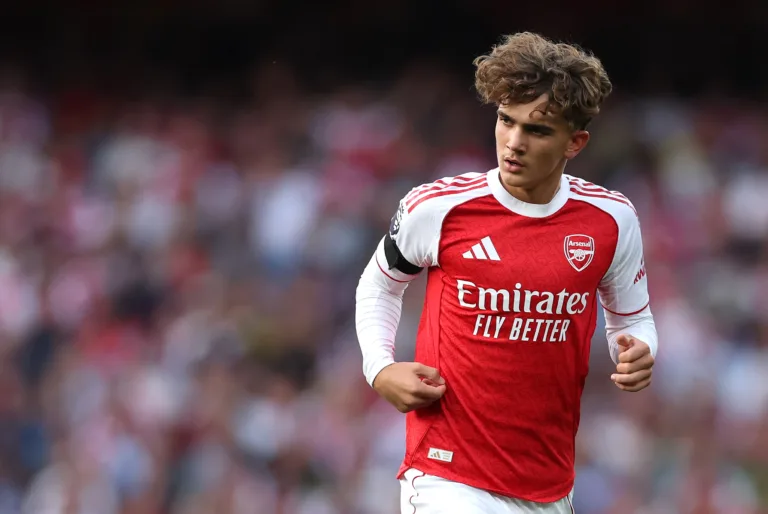
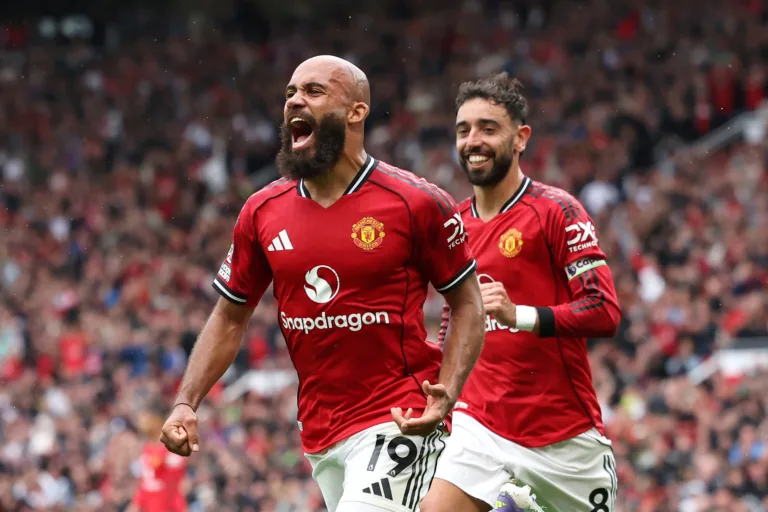
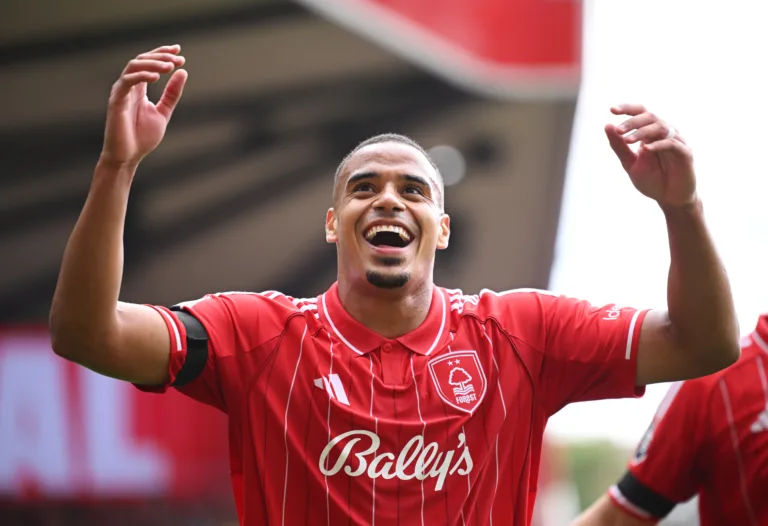
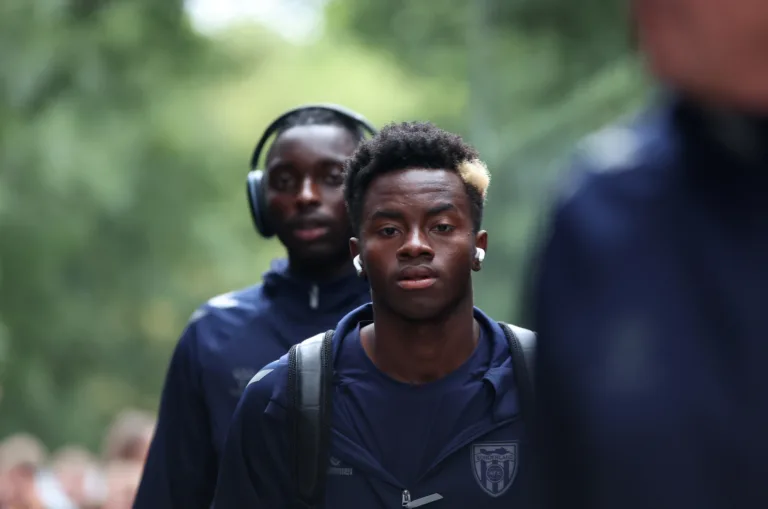
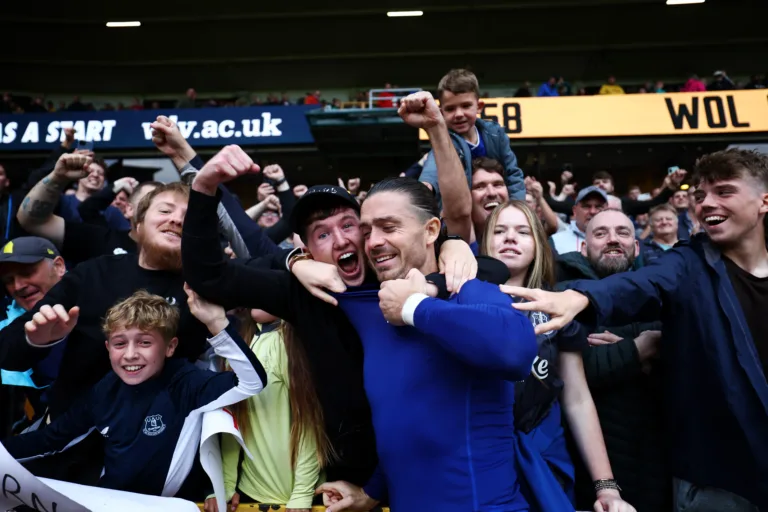
One Comment